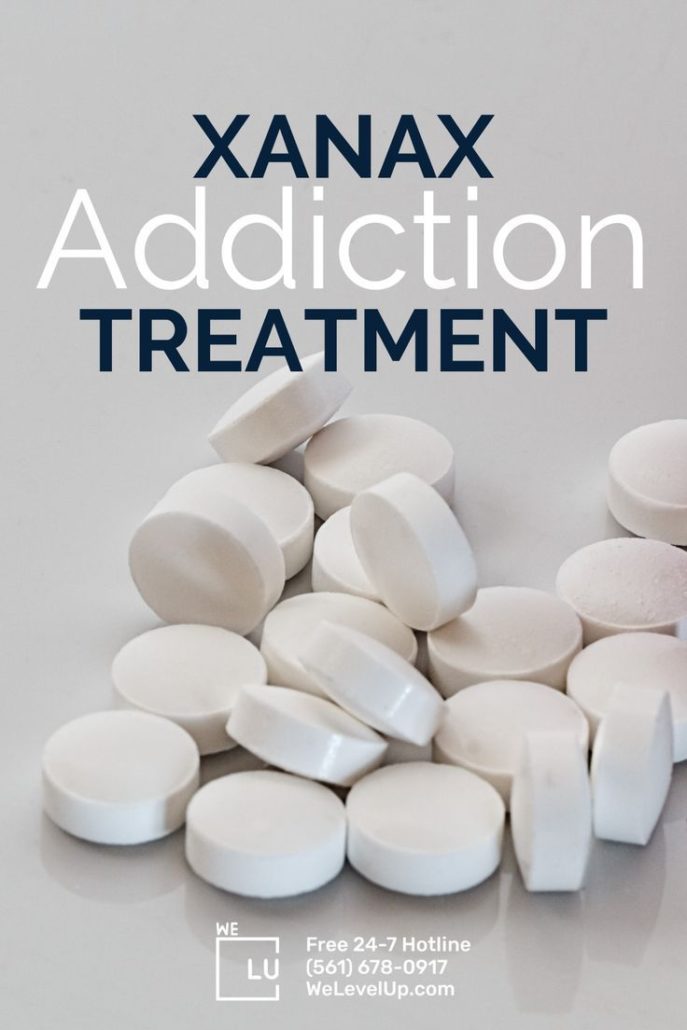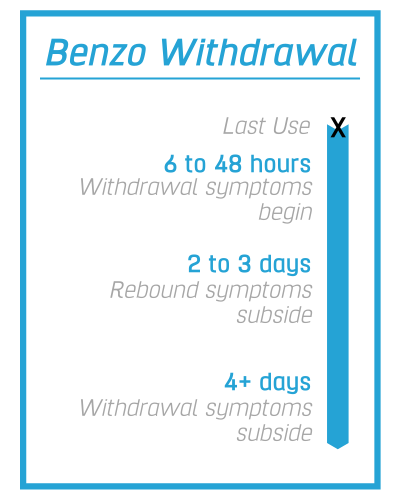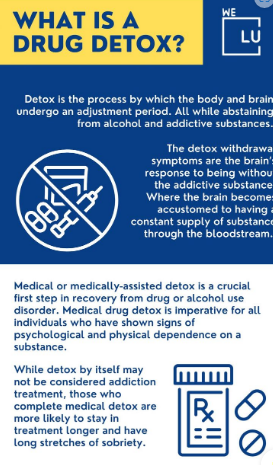How Long Does Xanax Stay in System?
Xanax, the brand name for Alprazolam, is likely the most popular drug in the benzodiazepine class. Xanax calms the nerves and produces a feeling of relaxation at standard doses, which come in pill form. If taken at high doses, especially if crushed and snorted or mixed into a solution for injection, it can create a euphoric high.
On average, Xanax has an elimination half-life of about 11 hours (though the range is from about 6-27 hours—sometimes higher in obese patients). This means that it takes a healthy person’s body this amount of time to get rid of half of a dose of the drug.
Because the body breaks down alprazolam quickly, lab tests don’t usually detect the drug itself. Instead, they typically look for α-hydroxyalprazolam, its metabolite. Virtually all drug tests screen for alpha hydroxyalprazolam. This includes the most basic 10-panel tests.
That said, there are several types of lab tests. Each one can yield different results and will detect the metabolite during a distinct window. The four most common, which will be detailed below, include:
- Urine tests
- Hair tests
- Blood tests
- Saliva tests
How Long Does Xanax Stay in Your System? Urine Test
The metabolite of Xanax can be detected in urine up to five days after the last dose. The duration is much shorter than benzos like diazepam, which may be detected for up to ten.
How long does Xanax stay in your system urine test? Urine screening is typically the preferred method when benzo use is suspected. This is because metabolites are present in it longer than other fluids. Screening is non-invasive too. However, the medication remains in hair for a longer period of time
How Long Does a Xanax Stay in Your System? Hair Test
Xanax can stay in your hair for up to three months after the last dose. This is because biomarkers of the drug become entrapped in the fibers of growing hair.
However, it takes 1-7 days for it to appear in hair after a dose. For this reason, hair testing is usually reserved when long-term or previous use is suspected. Bodily fluids, especially urine, are used when current or recent use is suspected.
How Long Does Xanax Stay in Your System Drug Test? Blood Test
How long does Xanax stay in your blood system? A single dose of Xanax can stay in blood for nearly five days. However, many things can impact results. Smokers, for example, metabolize it quicker. The half-life of Xanax could be cut in half. On the other hand, grapefruit can elevate levels of the metabolite.
How Long Does Xanax Stay in System? Saliva Test
Xanax does not stay in saliva very long. Traces of it disappear in 2.5 days or less. Sometimes labs do saliva screening anyway when ease of use or potential tampering are concerns.
How Long Does Xanax Last?
Xanax is not considered a long-lasting drug, as the effects last about four hours. Even though the half-life of Xanax is about 11 hours, the medication is no longer effective in the body after four hours. This is why it may have to be taken several times a day, depending on the prescription and severity of symptoms. It’s also why the drug isn’t typically recommended for chronic anxiety.
Skip To:
- How Long Does Xanax Stay in System?
- How Long Does Xanax Stay in Your System? Urine Test
- How Long Does a Xanax Stay in Your System? Hair Test
- How Long Does Xanax Stay in Your System Drug Test? Blood Test
- How Long Does Xanax Stay in System? Saliva Test
- How Long Does Xanax Last?
- Xanax Addiction Statistics
- Xanax Drug Fact Sheet
- What is Xanax and What is it Used for?
- Factors That Influence How Long the Effects of Xanax Last
- Why Do People Abuse Xanax?
- Xanax Addiction
- Signs of Xanax Addiction
- Xanax Addiction Treatment
Learn More:
Get Help. Get Better. Get Your Life Back.
Searching for Accredited Drug & Alcohol Rehab Centers Near You? Or Mental Health Support?
Even if you have failed previously, relapsed, or are in a difficult crisis, we stand ready to support you. Our trusted behavioral health specialists will not give up on you. Call us when you feel ready or want someone to speak to about therapy alternatives to change your life. Even if we cannot assist you, we will lead you wherever you can get support. There is no obligation. Call our hotline today.
FREE Addiction Hotline – Call 24/7Xanax Addiction Statistics
Benzodiazepines, such as Xanax are often used for the short-term treatment of anxiety. While benzodiazepine use is highly prevalent among U.S. adults, public health experts have not known what proportion of benzodiazepine users misuse them or meet criteria for benzodiazepine use disorders. A recent analysis suggests that benzodiazepine use disorders are relatively rare among the adults who use benzodiazepine medications, even if they are misusing them.
55 %
55 percent of nonmedical users acquired prescription painkillers (including Xanax) for free from a friend or relative
Source: NIDA
17.3 %
17.3 percent abused medications that were prescribed by their own doctor
Source: NIDA
50%
More than 50% of the nearly 176,000 emergency room visits for benzodiazepines in 2011 also involved alcohol or other drugs.
Source: SAMHSA
Xanax Drug Fact Sheet
Alprazolam
Drug class: Benzodiazepines
Alprazolam, sold under the brand name Xanax, among others, is a fast-acting, potent tranquilizer of medium duration in the triazolobenzodiazepine class, which are benzodiazepines fused with a triazole ring.
Why is this medication prescribed?
Alprazolam is used to treat anxiety disorders and panic disorder (sudden, unexpected attacks of extreme fear and worry about these attacks). Alprazolam is in a class of medications called benzodiazepines. It works by decreasing abnormal excitement in the brain.
Other uses for this medicine
Alprazolam is also sometimes used to treat depression, fear of open spaces (agoraphobia), and premenstrual syndrome. Talk to your doctor about the possible risks of using this medication for your condition.
Warnings
Xanax can slow or stop your breathing, especially if you have recently used an opioid medication or alcohol.
Do not stop using Xanax without asking your doctor. You may have life-threatening withdrawal symptoms if you stop using the medicine suddenly after long-term use. Some withdrawal symptoms may last up to 12 months or longer.
What is Xanax and What is it Used for?
Xanax is the brand name of alprazolam, a benzodiazepine prescription drug. Benzodiazepines are central nervous system (CNS) depressants, which are used to treat anxiety, insomnia, muscle rigidity, and seizures. Xanax is specifically used to treat Generalized Anxiety Disorder (GAD) and panic disorder.
GAD can be diagnosed when you experience three or more of the following symptoms more often than not for six months or more:
- Continuous, extreme, and unrealistic worry about everyday things
- Anticipating disastrous consequences
- Excessive worry about money, health, family, work, etc.
- Restlessness or edginess
- Uneasiness
- Becoming tired easily
- Having difficulty concentrating
- Irritability
- Tense muscles
- Troubled sleep, including having trouble falling asleep or staying asleep, or experiencing restless sleep
Panic disorder occurs when you experience sudden panic attacks and fear experiencing other panic attacks. Symptoms of panic attacks include:
- Changes in heart rate, including palpitations, pounding heartbeats or accelerated heart rate
- Sweating
- Shaking
- Feeling of shortness-of-breath or choking
- Chest pain
- Nausea or stomach pain
- Feeling dizzy or faint
- Feeling chilled or overheated
- Feelings of unreality (derealization) or being detached from yourself (depersonalization)
- A fear of losing control, losing your mind or dying
Panic disorder can be accompanied by agoraphobia. Agoraphobia is marked by fearing and avoiding places that may inspire panic or might make you feel trapped or helpless. Often you can be afraid of things like public transportation, being in either open or enclosed spaces, or being in a crowd. Usually, a person with agoraphobia will avoid public places or require a friend or family member to accompany them if they venture out. In extreme situations, they may feel unable to leave home.


Get Your Life Back
Find Hope & Recovery. Get Safe Comfortable Detox, Addiction Rehab & Mental Health Dual Diagnosis High-Quality Care at the We Level Up Treatment Centers Network.
Hotline (877) 378-4154Factors That Influence How Long the Effects of Xanax Last
A number of factors can influence the time it takes for Xanax to clear the body. These include:
Age
The half-life of Xanax is higher in elderly people. Studies have found that the average half-life is 16.3 hours in healthy elderly people, compared to an average half-life of roughly 11 hours in younger, healthy adults.
Weight
For obese individuals, it may be more difficult for your body to break down Xanax. The half-life of Xanax in people who are obese is higher than average. It ranged between 9.9 and 40.4 hours, with an average of 21.8 hours.
Ethnicity
Studies have found that the half-life of Xanax is increased by 25 percent in Asians compared to Caucasians.
Metabolism
A higher basal metabolic rate may decrease the time it takes for Xanax to leave the body. People who exercise regularly or have faster metabolisms may be able to excrete Xanax faster than people who are sedentary.
Liver Function
It takes longer for people with alcoholic liver disease to break down, or metabolize, Xanax. On average, the half-life of Xanax in people with this liver problem is 19.7 hours.
Dosage
Each tablet of Xanax contains 0.25, 0.5, 1, or 2 milligrams (mg) of alprazolam. In general, higher doses will take longer for your body to fully metabolize.
The total length of time you’ve been taking Xanax will also affect how long the effects last in your body. People who have been taking Xanax on a regular basis will consistently maintain a higher concentration in their bloodstream. It will take longer to fully eliminate all of the Xanax from your body, though you may not necessarily “feel” the sedative effects for longer because you’ve built up a tolerance to the medication.
Other Medications
Xanax is cleared by your body through a pathway known as cytochrome P450 3A (CYP3A). Drugs that inhibit CYP3A4 make it more difficult for your body to break down Xanax. This means that the effects of Xanax will last longer.
Medications that increase the time it takes for Xanax to leave the body include:
- azole antifungal agents, including ketoconazole
and itraconazole - nefazodone (Serzone), an antidepressant
- fluvoxamine,a drug used to treat obsessive-compulsive
disorder (OCD) - macrolide antibiotics such as erythromycin and clarithromycin
- cimetidine (Tagamet), for heartburn
- propoxyphene, an opioid pain medication
- oral contraceptives (birth control
pills)
On the other hand, certain medications help to induce, or speed up the process, of CYP3A. These medications will make your body break down Xanax even faster. An example is the seizure medication carbamazepine (Tegretol) and an herbal remedy known as St. John’s wort.
Alcohol Use
Alcohol and Xanax taken in combination have a synergistic effect on one another. This means that the effects of Xanax are increased if you consume alcohol. It will take longer to clear Xanax from your body. Combining alcohol with Xanax can lead to dangerous side effects, including the possibility of a fatal overdose.
First-class Facilities & Amenities
World-class High-Quality Addiction & Mental Health Rehabilitation Treatment
Rehab Centers TourRenowned Addiction Centers. Serene Private Facilities. Inpatient rehab programs vary.
Addiction Helpline (877) 378-4154Proven recovery success experience, backed by a Team w/ History of:
15+
Years of Unified Experience
100s
5-Star Reviews Across Our Centers
10K
Recovery Success Stories Across Our Network
- Low Patient to Therapist Ratio
- Onsite Medical Detox Center
- Comprehensive Dual-Diagnosis Treatment
- Complimentary Family & Alumni Programs
- Coaching, Recovery & Personal Development Events
Why Do People Abuse Xanax?
People may abuse Xanax for a variety of reasons. Some people take Xanax to get high or for recreational purposes, taking several pills at a time. In fact, Xanax is popular amongst high school students and young adults, according to several studies conducted by drug abuse experts.
People who abuse Xanax can get addicted within two weeks. They usually either crush Xanax into a powder and snort it or mix it with water and inject it. Others might abuse the drug because they are addicted to it, believing that they need to take more of the drug in order to feel how they initially felt when taking it.
People can also become psychologically dependent on benzodiazepines like Xanax. Because benzodiazepines are so effective at treating anxiety, many who suffer from severe anxiety issues may feel that they cannot cope without their medication. When someone becomes psychologically dependent on Xanax, quitting cold turkey can produce uncomfortable withdrawal symptoms.
An interesting piece of information about how long Xanax stays in your urine is that benzodiazepines are one of the most commonly abused classes of drugs. Benzodiazepines were also found to be one of the more common drugs used recreationally at dance clubs or parties and other places where people combine them with other substances.

Xanax Addiction
Some individuals who are dependent on Xanax never abused any kind of drugs before. They were people struggling with anxiety and looking to the medical field for relief and support. They started taking Xanax and felt a huge improvement in symptoms. Some of them thought that using more Xanax would provide an even greater result, so they misused it in larger doses. Others just use it for too long, and often with a doctor’s permission. They don’t realize they’re addicted to it until it’s too late.
Some people may attempt to reduce their dose resulting in withdrawal symptoms that copy their initial anxiety. They assume they cannot cope without the drug and keep abusing it. Sometimes the anxiety symptoms that resurface are caused by substance-induced symptoms that would otherwise dissipate if the drug abuse stopped.
Some people combine Xanax with other downer substances like alcohol or opiates in order to increase pleasurable feelings. This can dangerously lead to negative health consequences such as coma, respiratory arrest, and death. Other people use Xanax to control unwanted side effects of stimulant abuse. This combination of uppers and downers can lead to heart complications such as myocardial infarction.
With prolonged usage, people may become dependent on Xanax. This can mean that they rely on the drug both psychologically and physically. In Xanax, many users have found a pleasant escape from everyday stressors and must relearn how to have a productive, enjoyable life without taking this drug. Sober living skills often take time to develop as the person addicted to the prescription drug may feel life without Xanax is unbearable. Many users, in fact, take Xanax to feel normal and function in everyday life, as they may have come to believe that they cannot function without it. These individuals will require drug rehab before embarking on a new, sober life.
World-class, Accredited, 5-Star Reviewed, Effective Addiction & Mental Health Programs. Complete Behavioral Health Inpatient Rehab, Detox plus Co-occuring Disorders Therapy.
CALL (877) 378-4154End the Addiction Pain. End the Emotional Rollercoaster. Get Your Life Back. Start Drug, Alcohol & Dual Diagnosis Mental Health Treatment Now. Get Free No-obligation Guidance by Substance Abuse Specialists Who Understand Addiction & Mental Health Recovery & Know How to Help.
Signs of Xanax Addiction
The signs of Xanax addiction can present themselves as:
- Increased anxiety when not taking the medication
- Going through withdrawals (more intense than that of quitting caffeine)
- The development of tolerance to Xanax over time
- Inability to cut down on dosage despite knowledge of how dangerous an increase in dosage can be
- Decreased performance at work or school
The development of a benzodiazepine use disorder is also considered an addiction. Benzodiazepines are classified as Schedule IV controlled substances in the United States.
It’s illegal to take benzodiazepines without a prescription from a doctor for an extended period of time, and possession of benzodiazepines with intent to distribute is also illegal.

Taking Xanax or other benzodiazepines can introduce tolerance, or even withdrawal symptoms into the picture. Since Xanax is often taken with other substances, it can also cause dangerous interactions with drugs like alcohol. For example, since Xanax and alcohol are both depressants, when used together they can slow a person’s breathing and cause that person to experience a fatal overdoes.
Since benzodiazepines are so addictive, does this mean you will fail a drug test for them if you stop taking them? Yes and no. If you’ve been using benzodiazepines for an extended period of time or in very high doses, it’s possible to have a detectable amount of the medication in your system up to a month after stopping use. Some studies involving individuals who are going through detox and have been on high-dose benzos report more extreme numbers, such as 90 days or longer before tests return to normal results.
Experience Transformative Recovery at the We Level Up Treatment Center.
See our authentic success stories. Get inspired. Get the help you deserve.



Start a New Life
Begin with a free call to an addiction & behavioral health treatment advisor. Learn more about our dual-diagnosis programs. The We Level Up treatment center network delivers various recovery programs at each treatment facility. Call to learn more.
- Personalized Care
- Caring Accountable Staff
- World-class Amenities
- Licensed & Accredited
- Renowned w/ 5-Star Reviews
We’ll Call You
Xanax Addiction Treatment
There is a strong link between mental health and substance abuse. Individuals who struggle with mood disorders like depression and anxiety are more susceptible to developing an addiction to drugs or alcohol, often to self-medicate symptoms of their underlying mental health condition. These co-occurring disorders can make each other worse without proper treatment.
To determine the most effective ways of Xanax addiction treatment, it’s crucial to get an accurate assessment of all the symptoms. When a mental health professional has evaluated the symptoms, it may be determined that another form of mental condition is present and needs a particular treatment. Very often, some combination of psychotherapy, medication, and lifestyle changes effectively cope with functional.
Medically Assisted Detox
Medical detox is often considered the first stage of treatment. It will help you navigate the complicated withdrawal process but doesn’t address patterns of thought and behavior contributing to drug abuse. Various treatment approaches and settings can help provide the ongoing support necessary to maintain long-term sobriety after you complete detox.
Cravings are very common during detox and can be challenging to overcome. This often leads to relapse. Constant medical care provided during inpatient treatment helps prevent relapse. Clinicians can offer the necessary medication and medical expertise to lessen cravings and the effects of withdrawals.
Psychotherapy for Depression and Anxiety
Several different modalities of psychotherapy have been used in the treatment of depression, including:
- Cognitive Behavioral Therapy (CBT) – An effective treatment that involves changing both the patterns of negative thoughts and the behavioral routines which are affecting the daily life of the depressed person for various forms of depression.
- Person-Centered Therapy – A strategy that allows and encourages clients to understand and resolve their concerns in a safe, supportive environment.
- Solution-Focused Therapy – Approach interested in solutions that can be quickly implemented with a simple first step leading to further positive consequences.
Xanax Dual Diagnosis Treatment
Substance abuse and mental health disorders often co-occur. In many cases, traumatic experiences can result in mental health disorders and substance abuse. Dual-diagnosis rehabilitation treats both of these issues together. The best approach for the treatment of dual diagnosis is an integrated system. This strategy treats both the substance abuse problem and the mental disorder simultaneously. Regardless of which diagnosis (mental health or substance abuse problem) came first, long-term recovery will depend largely on the treatment for both disorders done by the same team or provider.

Xanax Medication-Assisted Treatments
Medication-Assisted Treatments (MAT) for substance use and mental health disorders are commonly used in conjunction with one another. This includes the use of medications and other medical procedures. During your rehab, the staff from your treatment facility will help you identify what caused your addiction and teach you skills that will help you change your behavior patterns and challenge the negative thoughts that led to your addiction. Sometimes, the pressures and problems in your life lead you to rely on substances to help you forget about them momentarily.
Someone with a Xanax addiction may take up to 20 or 30 pills per day. If the user stops the Xanax dosages, they may experience withdrawal effects such as anxiety, restlessness, insomnia, and tremors. The development of tolerance and withdrawal are indications of addiction. Learning more about “how long does Xanax stay in system?” is a good first step toward recovery, but it doesn’t have to end there. Contact one of our helpful treatment specialists today if you or a loved one are struggling with long-term substance abuse and a co-occurring mental health condition such as anxiety and depression. We Level Up NJ treatment center specialists can provide information on dual diagnosis and detox programs to treat Xanax withdrawals.
Search We Level Up “How Long Does Xanax Stay in System?” Topics & Resources
Sources
[1] Lorazepam: MedlinePlus Drug Information
[2] Lorazepam | C15H10Cl2N2O2 – PubChem (nih.gov)
[3] A Review of Alprazolam Use, Misuse, and Withdrawal – PMC (nih.gov)
[4] National Health Statistics Reports, Number 137, January 17, 2020 (cdc.gov)
[5] Failure of lorazepam to treat alprazolam withdrawal in a critically ill patient – PMC (nih.gov)
[6] Alprazolam and diazepam: addiction potential – PubMed (nih.gov)
[7] The benzodiazepine withdrawal syndrome – PubMed (nih.gov)
[8] A Review of Alprazolam Use, Misuse, and Withdrawal – PMC (nih.gov)